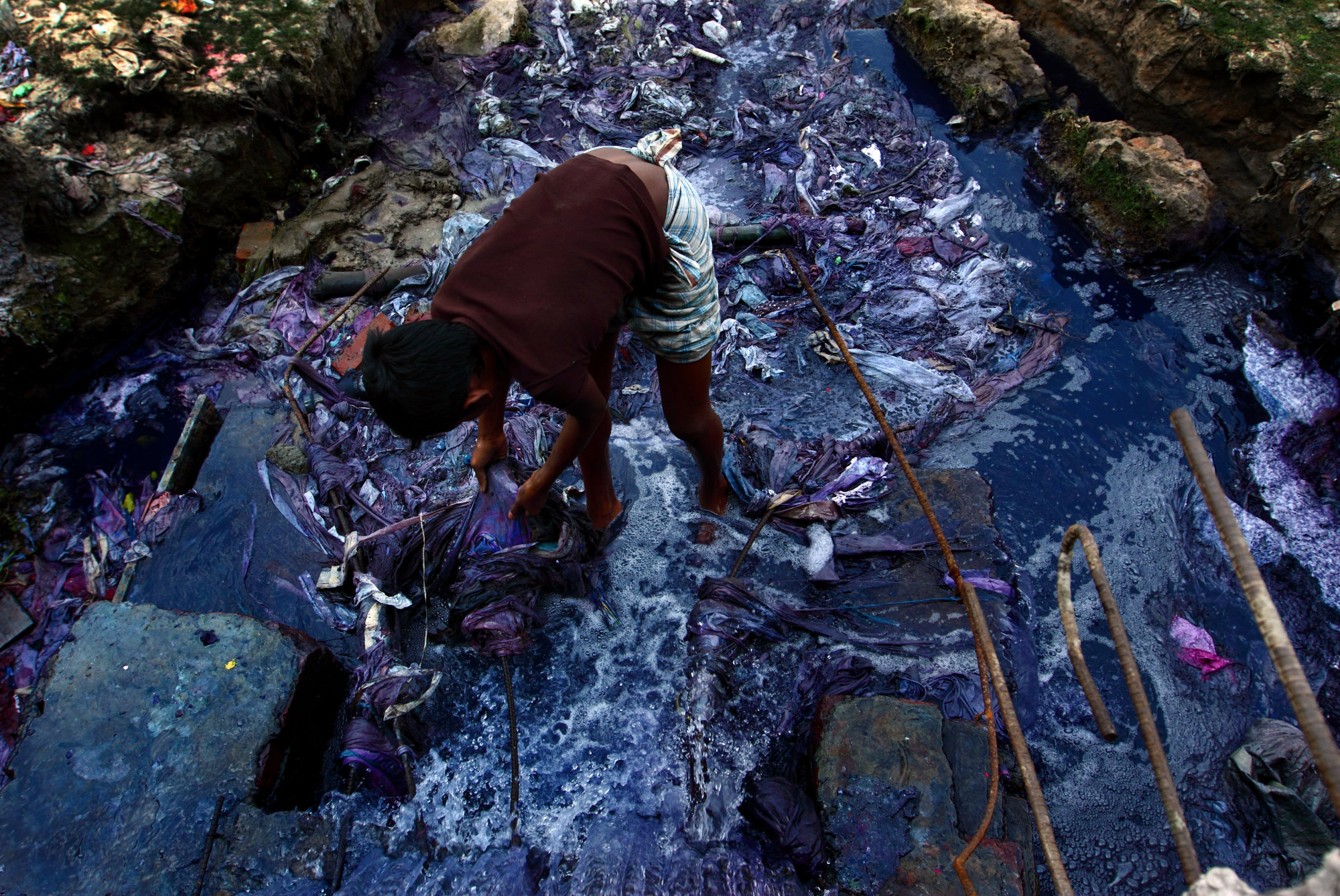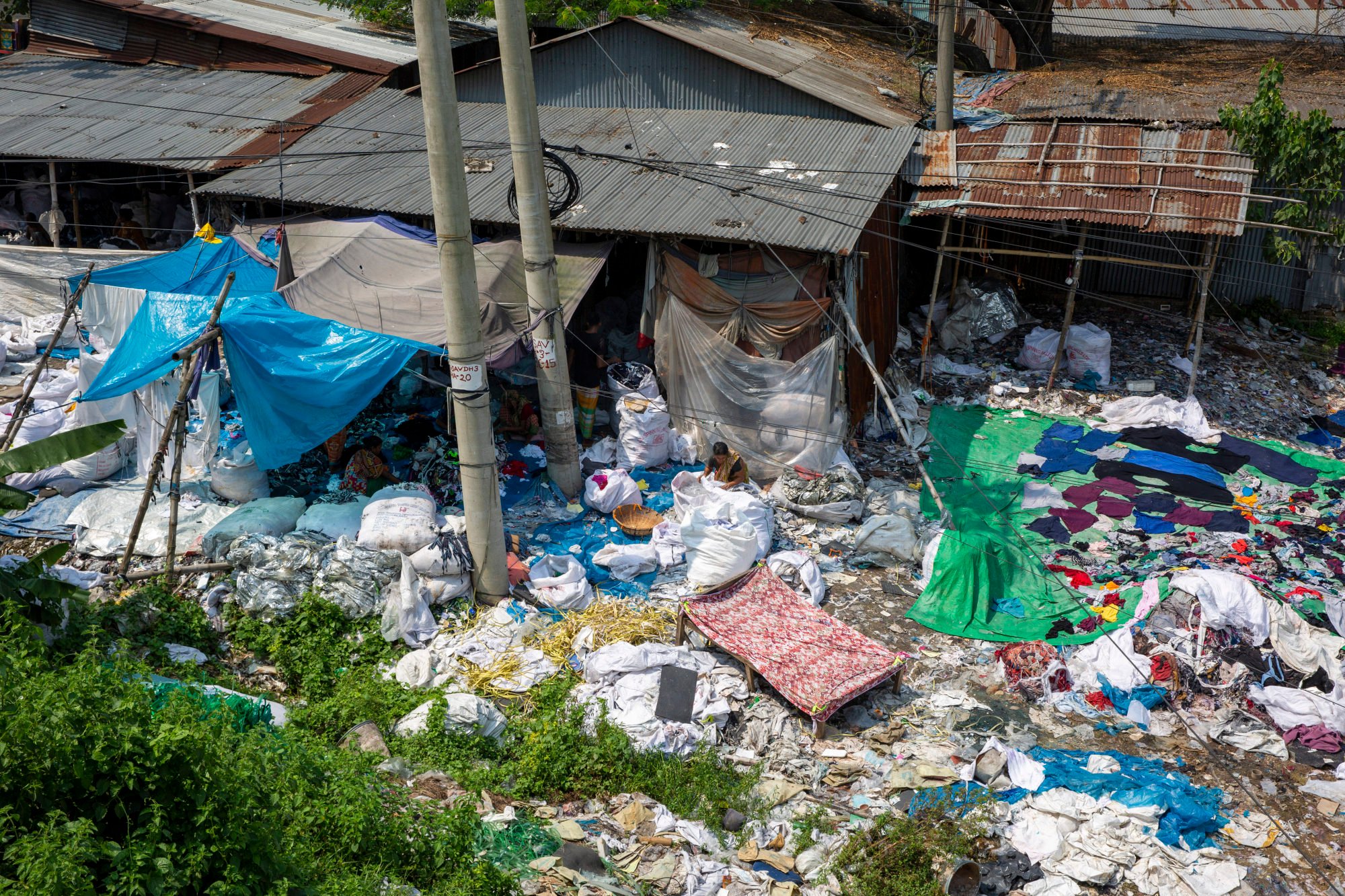“The scale of the decarbonisation challenge completely dwarfs the funds available,” says Vidhura Ralapanawe, executive vice-president of Hong Kong-based fashion manufacturer Epic Group.
Epic – which makes clothes in Bangladesh, Jordan and Ethiopia – has been at the forefront of global efforts to clean up the environmental footprint of the US$2 trillion fashion industry.
“We are working with local and global organisations to move the whole industry forward, while trying to bring together brands, retailers, manufacturers, mills, and service providers.”
‘A beautiful dress becoming something else’: haute couture from upcycling
‘A beautiful dress becoming something else’: haute couture from upcycling
The key to progress, Ralapanawe says, is a positive partnership between brands and manufacturers.
“Given the investment and risks manufacturers are taking, they need support in terms of long-term partnership as well as business terms that are sensitive to pricing.”
Fashion is one of the world’s most damaging industries.

Behind 2 per cent to 8 per cent of all greenhouse gas emissions, it sucks up scarce water and creates vast amounts of pollution and waste.
The industry in 2018 set the goal of halving emissions by 2030 and reaching net zero by 2050. But progress has been slow.
Britain’s monthly fashion habit alone creates the same carbon footprint as 900 round-the-world flights, according to the Oxfam charity. A 6okm (35-mile) car trip creates the same environmental damage as making one cotton shirt, it added.
The industry also knows that as of next year, it must comply with European Union legislation forcing companies to report and address emissions in their supply chains, with manufacturing to blame for about 80 per cent of all apparel sector emissions.
As global fashion brands pledge to drive down emissions and power towards the 2050 net-zero goal, textile and garment manufacturers are demanding that brands share the financial burden of investing in low-carbon technology and processes.
The hi-tech solutions from Hong Kong making fashion more sustainable
The hi-tech solutions from Hong Kong making fashion more sustainable
Last month, Transformers Foundation – a New York-based think tank that speaks for denim makers and brands – released a report urging more collective action to achieve a climate transition.
Kim van der Weerd, intelligence director at Transformers Foundation, says the apparel sector rarely asks “who pays” for the big transition, assuming that it is the suppliers whose facilities must change who will foot the bill.
“That is both impractical and inequitable,” she says, given that suppliers have far less money than the big brands.

Experts say decoupling the key sticking point – who must act and who can pay – could help break the impasse, putting suppliers in charge of what changes to make and ensuring that brands duly invest in that overhaul.
Textile makers want a range of funding options from the brands they feed to finance a new, cleaner production line.
Mohiuddin Rubel, a director at Bangladesh’s apparel makers’ trade body – the Bangladesh Garment Manufacturers and Exporters Association (BGMEA) – says fashion brands can support suppliers by offering grants, low-interest loans and direct investments.
How much do your clothes cost per wear? Get value from your wardrobe
How much do your clothes cost per wear? Get value from your wardrobe
That would help suppliers move to more renewable energy and energy-efficient technology, as well as retain workers, he says.
Some initiatives are already under way.
The Apparel Impact Institute (AII), a US think tank promoting sustainable investments, formed the Fashion Climate Fund last year that mobilised US$250 million (HK$2 billion) with the aim of unlocking US$2 billion of finance and cutting 150 million tonnes of carbon from fashion over the next three decades.

Kurt Kipka, chief impact officer at the Institute, says the fund could help speed cuts as the sector is ripe with opportunity for rapid reform.
Among suggested easy, quick wins: recovering heat from the water used in production or improving boiler efficiency.
Apparel makers said making climate finance available, accessible and affordable for suppliers is essential for a low-carbon future for fashion. But the sums involved are sizeable.
‘Waste is a design flaw’: ideas for a circular fashion economy
‘Waste is a design flaw’: ideas for a circular fashion economy
If the industry wants to achieve net zero by 2050, it will need more than US$1 trillion of investment, said an AII report.
Besides a shortfall in funding, the industry faces another big hurdle to rapid decarbonisation – the sheer diversity of priorities and problems faced by its myriad suppliers.
In densely populated Bangladesh, suppliers find it difficult to generate enough rooftop solar power as most factory buildings expand vertically rather than horizontally, limiting roof space, cloth makers told a climate conference held in Dhaka in October.

In Pakistan, factories are unable to cut deals with third parties that would supply renewable power to help them cut emissions, and must instead make the reductions in-house, said the Transformers Foundation report.
In other words, one size will not fit all.
“If our approach is to take the collective [net zero by 2050] goal of the Paris Agreement and to divvy it up equally amongst companies without taking feasibility into consideration, we will fail,” says van der Weerd.
Want to fight climate change? Stop throwing away your clothes so fast
Want to fight climate change? Stop throwing away your clothes so fast
Epic Group’s Ralapanawe says the needs of a giant may not be the same as those of a heavily leveraged small supplier, and a mix of financial tools will be needed to meet both.
Kipka says helping suppliers lighten their footprint demanded flexibility from funders.
“It’s imperative that we meet industry and partners where they are – based on the different needs of leading facilities and facilities only starting in the decarbonisation journey,” he says.
